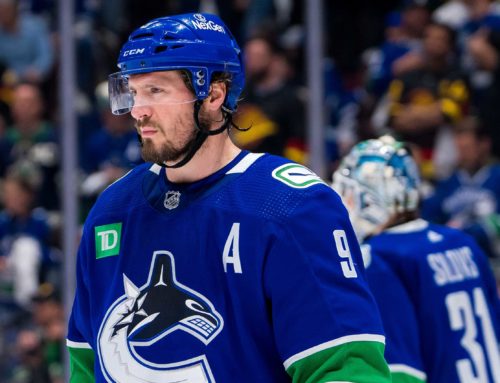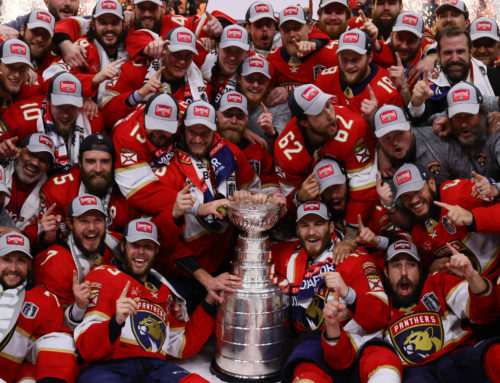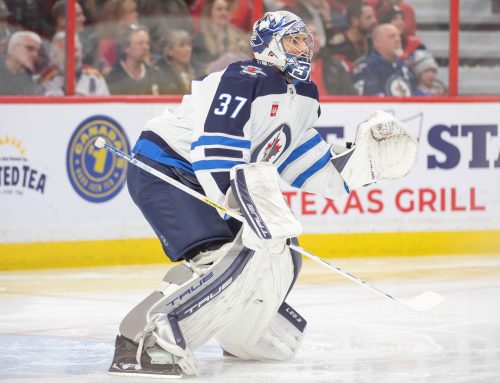Frozen Tools Forensics: Applying Historical Trade Deadline Trends
Chris Kane
2023-03-03
Welcome to deadline day. This has been a wild week with a ton of action leading up to Friday. As I am writing this on Thursday I don't know if there are any dominoes still falling, but there are probably a couple of players that did not move right? For a full list of fantasy impacts and takes check out the running list of articles in the Latest NHL Moves section. We won't be hitting directly on a specific trade in this article, but in honor of the trade deadline I wanted to take a look back and see how getting traded at the deadline impacts a player's value more generally.
More specifically we are going to look back at the 21-22 NHL trade deadline and try to extract some general takeaways from player performance. To make it work I have pulled two Big Board reports, one from prior to the deadline, and one for post-deadline. On the reports page you can do a custom report and select dates. I exported that data and created a custom table with a few of the most interesting categories to me and then filtered by players who changed teams. That filtering process attempted to take into account players who moved in the month of March (deadline last season was March 23rd), plus Tyler Toffoli who was the biggest name moved in February. I couldn't find a list formatted the way I needed it so ended up entering some of this portion by hand so it is certainly possible that the list is not complete, but it covers the vast majority of potentially fantasy relevant players.
In the table below, the first data section contains the player's 82 game pace. Since we are dealing with different sample sizes I wanted to compare pace numbers. Next we have percent of the team's total power-play, and total time on ice. These are included to get a general sense of a player's deployment, though certainly doesn't account for things like linemates, or shorthanded time. Finally we have shots per game, which is included as it is a standalone category in many leagues, and when combined with point pace gives some indication of a player's offensive contribution. The gray section contains the same categories, but post deadline, and the final section is the change between these two points.
First up we are going to look at the impact changing teams had on players who were conceivably top six forwards in their original location.

The above forwards were grouped together based on their production, their percent of power-play time and general time on ice. Generally we are looking at reasonably productive players who are getting more than 16 minus a night total and half or more of their team's power play. Max Domi is sort of the exception to the deployment criteria, but all the players in italics are missing one of these items though still seem to be separate from the group we will be talking about next.
Ideally we would probably isolate players like Tyler Toffoli and Claude Giroux as our top line forwards, but as a comparison group the sample size is so small it is hard to draw any trends. We have quite a few of these kinds of players on the move this year, definitely more so that 2021-22. We are talking about Patrick Kane, Timo Meier, Vladimir Tarasenko, and Bo Horvat here, and potentially even guys like Ryan O'Reilly, and Tyler Bertuzzi are reasonably comparable to Tyler Toffoli.
Taking the list as a whole though, five of these eight players dropped point paces after being traded, and that drop was usually around 20 points. All lost time on ice – two minutes on average. Everyone except Giroux lost power-play time, and no one increased shot rates. Based on past experience then chances are most of the top six forwards who are on the move this year won't see a big increase in their production.
The exceptions to that rule last season were Rickard Rakell, Claude Giroux, and Andrew Copp. I think they are illustrative examples for this season. All three were traded from sellers to buyers, and once they arrived they maintained top six deployment surrounded by more talented players. Even though they lose overall time on ice, their time was much more productive. Toffoli was traded to a contender, but played in a third line role, and that holds true for much of the rest of this list.
Players who fall into the former category, so are more likely to follow the Giroux path this season are Horvat, Kane, Meier and possibly O'Reilly and Tarasenko. O'Reilly surprised with top six deployment when many thought he was earmarked for third line center, and Tarasenko's deployment has been a bit inconsistent, but definitely isn't bottom six. Bertuzzi is likely going to a third line role so might be of a Toffoli for this season.
Next we have depth forwards. Most of these players were bottom six players to start with. Some potentially comparable names this season include Jesse Puljujarvi, Marcus Johansson, Gustav Nyquist, Tanner Jeannot, and Evgenii Dadonov.

In total there were 18 of these kinds of players in 2021-22, the above list showing only the highest performing players. Of the 18, only two saw an increase by more than a ten-point pace. Ten of the 18 did technically see an increase in power-play percentage, most minimal, but four saw an increase of 20 percent or more and one ended up over the 60 percent mark for their new team. In terms of shots seven of the 18 saw an increase, with three approaching three shots per game, but all five who decreased shot rates dropped to one per game or less. Basically by and large being a bottom six player traded at the deadline does not help your value. We see a smaller chance of increased production than we do for the top six players traded at the deadline. We might hope that since this list contains players going the other way in trades – from buyers to sellers (to free up some cap space, or because they are prospects) we might see increases as those players assume an expanded role in their new home.
Of all of the players traded, including the ones that saw increases in point paces, time on ice, and/or power-play time we really have only two (of the 18) who become worth rostering in fantasy: Frank Vatrano and Mathieu Joseph. Unfortunately, their profiles aren’t really the same. Vatrano was a prospect given a bigger role, while Joseph was expected to stay in the bottom six in Ottawa and for some reason got time on the top line and blew up. He hasn't gotten back in the top six this season so it is still unclear what that was all about.
The takeaway here, unsurprisingly, is that deployment in the new situation matters, and so in the unlikely event it improves for the traded player that is a player worth keeping an eye on. Chances are low though that a bottom six player's role, or point production improves, and even if it does, there is a very low chance that player suddenly becomes rosterable. If the percentages hold true this year as well one or two of the 20 odd depth forwards already traded might become rosterable.
Next we move on to defensemen.

Of the 13 defensemen on the move on our list here nine of them increased their point pace by ten or more points. That is a pretty stark contrast to the forward lists above. Power-play percentages were a bit of a mixed bag, but almost everyone lost time overall. The only players who saw increases were below 16 minutes on their original team so it isn't hard to see why they increased. Overall seven of them increased by half a shot per game or more, while only two lost at that rate.
These rates are all a significant improvement compared to the skaters overall, but unfortunately that doesn't necessarily mean a defenseman on the move is a helpful thing fantasy-wise. Most increased shot rates and point paces which probably means they moved to better teams so were spending more time in the offensive zone. Still only two ended up over a 40-point pace, and only four had two or more shots per game. Less time for better teams also likely means a drop in peripherals, though I didn't pull forward the data for that and is certainly another area to explore. Essentially we are left with the idea that even while moving tends to be better for defensemen than forwards, as most of the players moved weren't really rosterable before the move, and that stayed true after.
The best case is either for guys like Mark Giordano who are get halfway decent deployment on an improved team (maybe a Jakob Chychrun or a Mattias Ekholm from this year) or a Jake Walman who moved to a seller and saw a big bump in ice (maybe a Filip Hronek, though he as getting decent opportunity in Detroit anyway or Rasmus Sandin). Guys like Luke Schenn, Vladislav Gavrikov, and Dmitry Orlov seem to fall in an in-between zone here as their peripheral contributions are why they are rostered in most leagues rather than their point production.
We don't have good comparisons for guys like Tyson Barrie, Shayne Gostisbehere, or Erik Gustafsson who are offensive specialists, and featured prominently on their old teams, but at least in those cases the increased competition for top power-play deployment doesn't bode well for them.
Do your part to support organizations working to make hockey for everyone.





 BUF
BUF N.J
N.J PHI
PHI MIN
MIN FLA
FLA WPG
WPG VAN
VAN TOR
TOR CGY
CGY CBJ
CBJ